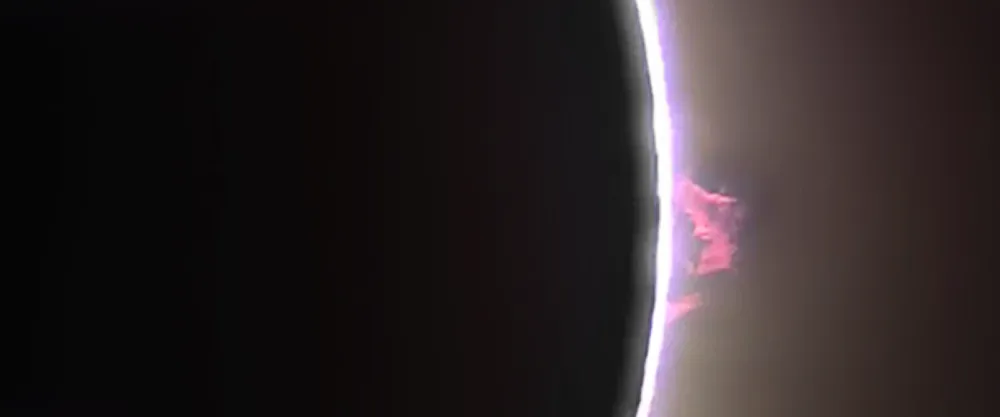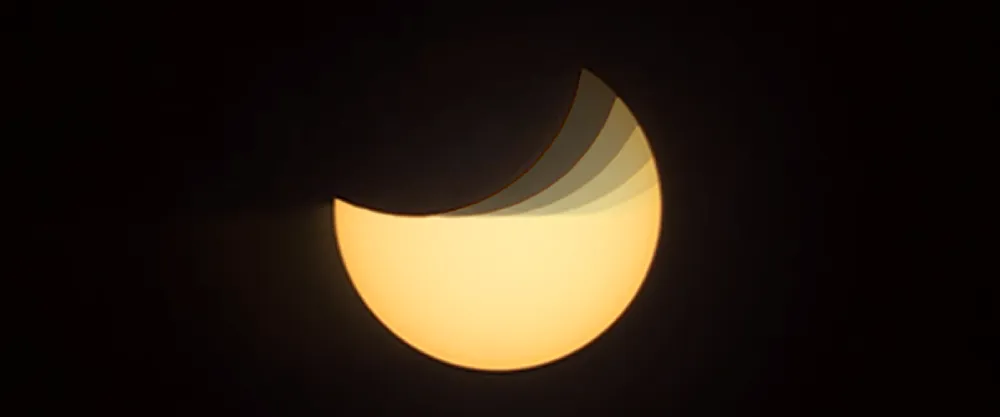Hi guys! Welcome back and sorry for these days of absence. I'll make it up to you without any doubt ;-). Today I will show you a phenomenon that fascinates the human race from time immemorial. The show is so impressive that even the ancient populations used to match these events to more or less catastrophic religious phenomena. It is such an uncommon event that, unfortunately, only a few of us can see one. This is the Total Solar Eclipse.
Some of you already know that last August 21 in America has been one of the most fascinating astronomical events of these years: a Total Solar Eclipse. A solar eclipse occurs when, thanks to a game among the orbits, the Moon passes in front of the solar disc. If the Moon covers it entirely it is called Total eclipse, otherwise it is Partial.
My team and I (Blue Journey), despite we were not in America, made a webcast of the entire phenomenon sending the images of the best NASA astronomical observatories in the USA. Some of these were unfortunately under the clouds, others not...
What you see above is my processing of some raw images acquired by the NASA SDO (Solar Dynamics Observatory) satellite in the ultraviolet spectrum (AIA 17,4 nm) [don't be fooled by appearances, the Sun is actually white but this is another story...]. This acquisition allow us to observe all those surfaces with an average temperature of 1 billion degrees. So, yes, the Sun is slightly hot...
The eclipse, for us, is a spectacular phenomenon to observe but for others it becomes a precious opportunity. For scientist, in fact, eclipse means researches. The Moon, passing in front of the Sun, lowers its brightness so much that it allows to observe more exterior and less energetic elements like: the solar crown, the chromosphere, the protuberances (the image below) and the solar arches (the image above).


We all know that the Moon runs around the Earth every 28 days. One question therefore arises spontaneously: why does not an eclipse occur every month of the year? It is very simple: the lunar orbit is not perfectly aligned with the Earth-Sun axis so sometimes the Moon passes - in perspective - above and sometimes under the Sun. The image below is a photo taken by the author on March 20, 2015 during a Patial Solar Eclipse visible from Europe. As you can see in this case the Moon obscured only the top of the solar disc.


And now, to see this show again, we have to wait for a few years: in 2019 and 2020 there will be two total solar eclipse in South America, in 2022 it will be in Antarctica (not the most comfortable place in the world) and in 2023 in Australia. Europe unfortunately has never been very lucky for this kind of phenomenon... And you? Have you ever seen an eclipse?

The first raw shot is acquired by the NASA SDO (Solar Dynamics Observatory) satellite in the ultraviolet wavelength (17,4nm) and processed by me. The second shot is an elaboration of raw data acquired by a NASA terrestrial observatory in Capser, WY. The last one is a composition of 7 shots taken with my unmodded Canon EOS 60D, a solar-filtered TS APO 480mm refractor telescope on an HEQ5 mount.
480mm - f/6 - ISO800

>>> Clicca QUI per la versione ITA

Alessio Vaccaro
Follow @ilvacca and upvote if you want more contents like this one. Thank you.